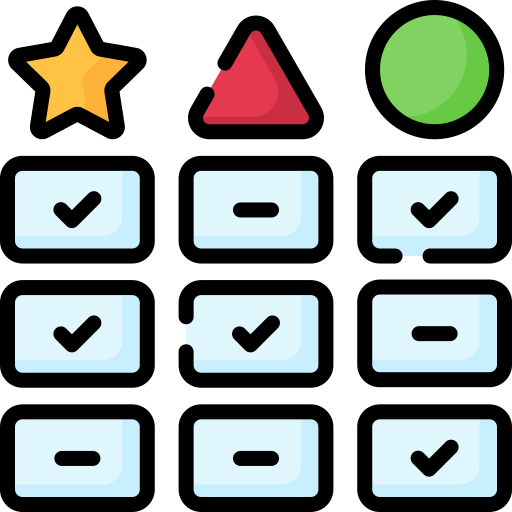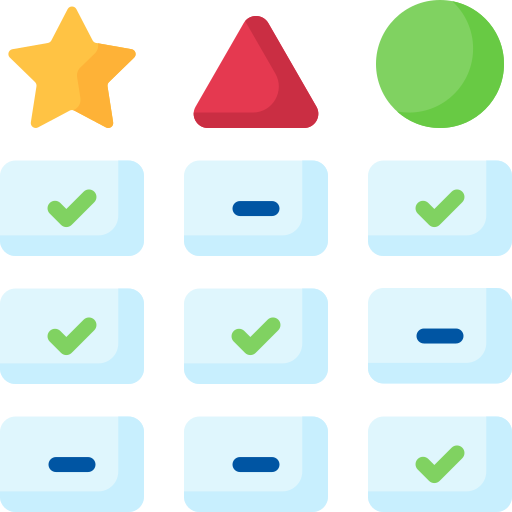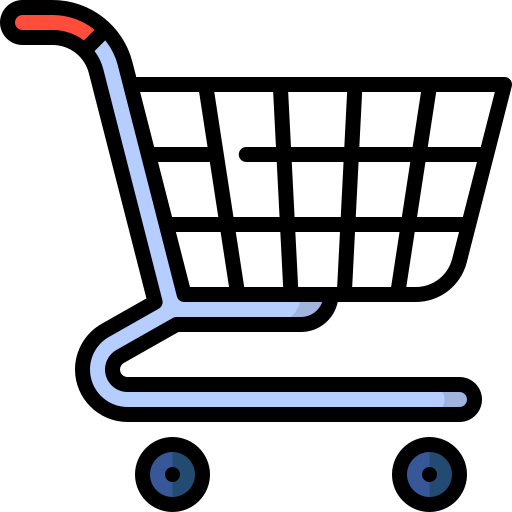
32 Verified Hands-On Reviews
To combat fake reviews we only accept video reviews from verified channels. Each review must show the product and the face of the reviewer.
Expert reviews [32]
- with a score: 15
- without a score: 17
| Highest score by heliguy.com |
100
|
| Average score based on 32 reviews |
82
|
| Lowest score by Photography PX |
68
|
Score distribution:
| 80-100 |
|
| 60-80 |
|
| 40-60 |
|
| 20-40 |
|
| 0-20 |
|




Expert consensus
The DJI FPV drone is highly praised for its camera quality, video capabilities, flight time, range and signal strength, obstacle avoidance, and portability, making it a versatile and powerful tool for capturing stunning aerial footage.
The DJI FPV drone has received positive reviews for its camera quality, video capabilities, flight time, range and signal strength, obstacle avoidance, and portability. The camera offers smooth footage and impressive stabilization capabilities, making it well-suited for FPV flying and capturing dynamic action shots.
However, it may not be ideal for capturing horizontally level cinematic footage while banking. The drone's video capabilities include 4K recording at 60fps, various frame rates, and a first-person view feature that provides an immersive flying experience. The flight time of up to 20 minutes is significantly better than standard FPV drones, and the batteries can be quickly charged and swapped out for extended flight time.
The drone offers a long-range flight capability with a strong signal strength, making it suitable for aerial photography, videography, exploration, and recreational flying. The obstacle avoidance system provides an added layer of safety, although it is not as sensitive as other DJI drones. The drone is not the most portable option due to its fixed prop arms, but with the right accessories, it can be conveniently transported for specific use cases.
Overall, the DJI FPV drone is highly regarded for its features and capabilities, making it a versatile and powerful tool for capturing stunning aerial footage.
Camera Quality
The DJI FPV has a 12-megapixel camera with image stabilization capabilities, but its lack of a horizontal gimbal axis may result in banked visuals during flight.
Based on the expert reviews, the DJI FPV has a camera with a resolution of 12 megapixels and a 1/2. 3-inch CMOS sensor. The camera is equipped with image stabilization capabilities, including a two-axis gimbal and electronic image stabilization (EIS) called RockSteady. The combination of physical and electronic stabilization ensures smooth footage during flight, even during fast and dynamic maneuvers.
However, it's important to note that the gimbal lacks a horizontal axis, resulting in banked visuals when the drone banks left or right. This characteristic is typical of FPV flying and accurately depicts the orientation of the drone. While the RockSteady EIS system does an impressive job in keeping video footage smooth, it may not be ideal for capturing horizontally level cinematic footage while banking.
Overall, the camera quality of the DJI FPV is praised by reviewers for its smooth footage and impressive stabilization capabilities. It is well-suited for FPV flying and capturing dynamic action shots. However, if you require horizontally level cinematic footage while banking, you may want to consider other options.
What is the resolution of the camera of the DJI FPV?
Based on 10 quotes from 10 sources [show quotes and sources]
What is the sensor size of the camera of the DJI FPV?
Based on 9 quotes from 7 sources [show quotes and sources]
What are the image stabilization capabilities of the camera of the DJI FPV?
Based on 8 quotes from 6 sources [show quotes and sources]
Is there a gimbal available for the DJI FPV?
Based on 9 quotes from 7 sources [show quotes and sources]
Video Capabilities
The DJI FPV drone has received positive reviews for its impressive video capabilities, including 4K/60fps recording, various frame rates, and a first-person view feature, making it a versatile and powerful tool for capturing stunning aerial footage.
The DJI FPV drone has received positive reviews for its impressive video capabilities. It offers a maximum video resolution of 4K at 60 frames per second (fps), allowing users to capture crisp details and beautiful footage. The drone can record 4K/60fps video at up to 120 Mbps, ensuring high-quality visuals.
Additionally, it supports shooting video at various frame rates, including 1080p video at up to 120fps, which is great for slow-motion shots.
One of the standout features of the DJI FPV is its first-person view (FPV) capability. The drone comes with video goggles that provide an immersive flying experience, allowing users to see the live video feed from the drone's forward-facing camera in real-time. This feature adds to the excitement and immersion of flying the DJI FPV drone, making users feel like they are in the pilot's seat.
In terms of video transmission range, the DJI FPV offers an impressive range of up to 10 kilometers (6.2 miles). However, it's important to note that flying the drone out of visual range may be illegal in certain locations.
Overall, the DJI FPV is highly regarded for its video capabilities, making it a great choice for capturing stunning aerial footage. Whether you're a professional videographer or an enthusiast looking to capture exhilarating moments, the DJI FPV's 4K video recording, various frame rates, and first-person view feature make it a versatile and powerful tool.
What is the maximum video resolution of the DJI FPV?
Based on 5 quotes from 5 sources [show quotes and sources]
What frame rates are supported by the DJI FPV?
Based on 5 quotes from 5 sources [show quotes and sources]
What is the video transmission range of the DJI FPV?
Based on 7 quotes from 7 sources [show quotes and sources]
Does the DJI FPV offer first person view?
Based on 11 quotes from 9 sources [show quotes and sources]
Does the DJI FPV support 4K video recording?
Based on 15 quotes from 11 sources [show quotes and sources]
Flight Time
The DJI FPV offers a maximum flight time of up to 20 minutes, significantly better than standard FPV drones, and its batteries can be quickly charged and swapped out for extended flight time.
The DJI FPV offers a maximum flight time of up to 20 minutes, although real-world tests have shown that the actual flight time can range from 10 to 16 minutes per battery. This flight time is achieved under ideal conditions, such as flying at a speed of 25mph in windless conditions. While the advertised 20 minutes may not always be achievable, it is still significantly better than the typical flight times of standard FPV drones, which usually range from 3 to 10 minutes.
The DJI FPV batteries have smart charge technology, allowing them to charge quickly. However, there is no specific information on the exact charging time for the batteries. The DJI FPV Battery Charging Hub, included in the DJI FPV Fly More Kit, can charge up to three batteries in sequence, reducing overall charging time if you have multiple batteries.
The batteries of the DJI FPV are interchangeable, allowing users to swap out batteries and have multiple fully charged batteries ready for extended flight time. The DJI FPV Combo includes one Intelligent Flight Battery and one Goggles battery, and additional batteries can be purchased separately. The DJI FPV Fly More Kit contains two DJI FPV Intelligent Flight Batteries and a DJI FPV Battery Charging Hub, providing an efficient way to charge and swap out batteries.
Overall, the DJI FPV offers a substantial improvement in flight time compared to its competitors in the FPV drone market. It is suitable for users who want to have longer flight sessions and are willing to invest in additional batteries for extended flight time.
What is the maximum flight time of the DJI FPV?
Based on 10 quotes from 9 sources [show quotes and sources]
How long does it take to recharge the batteries of the DJI FPV?
Based on 16 quotes from 13 sources [show quotes and sources]
Are the batteries of the DJI FPV interchangeable?
Based on 5 quotes from 2 sources [show quotes and sources]
Range and Signal Strength
The DJI FPV Video Drone offers a maximum control range of 10 kilometers (6.2 miles) and features a standard remote controller as well as a Motion Controller for a unique flying experience.
The DJI FPV Video Drone offers two remote control options: a standard remote controller and a new Motion Controller. The standard remote controller is a traditional two-handed video game-style controller with flight sticks, a return-to-home button, a gimbal wheel, and various other buttons for convenience.
The Motion Controller allows users to control the drone using hand movements, providing a unique and immersive flying experience.
According to multiple expert reviews, the DJI FPV drone has a maximum control range of 10 kilometers (6. 2 miles). However, it is important to note that flying the drone beyond visual range is technically illegal. The drone employs the new O3 transmission system, which offers a strong signal strength and dual-frequency transmission for reliable and stable video transmission.
Experts have praised the near real-time and lag-free video transmission, even as the drone flies farther away.
The DJI FPV drone comes with GPS, which helps with navigation, locating the drone's position, and enabling safety features such as auto-leveling, Return To Home, and obstacle avoidance. The GPS system is particularly useful when flying at a distance from the pilot or in unfamiliar locations.
Several factors can affect the control range and signal strength of the DJI FPV drone, including line of sight, interference from other electronic devices, geographical and atmospheric conditions, and the transmission system. It is important to maintain a clear line of sight, fly in areas with minimal interference, and consider factors such as distance, elevation, weather conditions, and electromagnetic interference.
Overall, the DJI FPV drone offers a long-range flight capability with a strong signal strength, making it suitable for various use cases such as aerial photography, videography, exploration of new terrains, and recreational flying. However, it is important to adhere to legal regulations and consider specific conditions and environments when determining the actual control range and signal strength.
What are the remote control options of the _ENTITY?
Based on 9 quotes from 8 sources [show quotes and sources]
What is the maximum control range of the DJI FPV?
Based on 6 quotes from 6 sources [show quotes and sources]
What do the experts say about the signal strength of the DJI FPV?
Based on 3 quotes from 3 sources [show quotes and sources]
Does the DJI FPV come with GPS?
Based on 4 quotes from 4 sources [show quotes and sources]
What factors can affect the control range and signal strength of the DJI FPV?
Based on 3 quotes from 3 sources [show quotes and sources]
Obstacle Avoidance
The DJI FPV drone is equipped with obstacle avoidance sensors that detect obstacles in front of the drone and assist in avoiding collisions, but they are not as sensitive as the sensors on DJI's Mavic series drones and do not detect obstacles to the side or rear of the drone.
The DJI FPV drone is equipped with four obstacle avoidance sensors, two at the front and two on the bottom. These sensors help detect obstacles and assist in avoiding collisions during flight. However, they are not as sensitive as the obstacle avoidance sensors found on DJI's Mavic series drones.
The sensors are activated when flying in Normal Mode, which is recommended for beginners and first-time FPV drone users. In this mode, the sensors can detect obstacles in front of the drone and gradually slow it down to allow the pilot to react and avoid a collision. However, the sensors are not designed to detect obstacles to the side or rear of the drone.
They primarily focus on detecting obstacles in front of the drone and aid in precision movement in low-light environments. While the obstacle avoidance system provides an added layer of safety, pilots should still exercise caution and be mindful of their surroundings, especially when flying at high speeds.
Overall, the DJI FPV drone's obstacle avoidance system is suitable for users who prioritize safety and want assistance in avoiding collisions while flying in Normal Mode.
What obstacle avoidance sensors are included in the DJI FPV?
Based on 17 quotes from 11 sources [show quotes and sources]
What is the range and effectiveness of the obstacle avoidance system on the DJI FPV?
Based on 7 quotes from 7 sources [show quotes and sources]
Does the DJI FPV have the ability to detect and avoid obstacles in all directions?
Based on 16 quotes from 12 sources [show quotes and sources]
Portability
The DJI FPV drone is not very portable due to its fixed prop arms and lack of folding capability, but with the right accessories, it can be transported conveniently for specific use cases.
The DJI FPV drone is not the most portable option available due to its fixed prop arms and lack of folding capability. It has dimensions of 255×312×127mm and weighs approximately 795 grams. This makes it a bit heavier than other FPV racing drones in its size range.
To transport the DJI FPV, users would need a bag or case big enough to fit its dimensions, and it is recommended to remove the propellers to avoid deformation. The drone does not come with a carrying case or bag, so users are advised to purchase a specific bag or case designed for the DJI FPV, controllers, and DJI Goggles.
Some suggested options include the DJI Goggles Carry More Backpack or a sturdy Pelican case. Overall, the DJI FPV is not the most portable option, but with the right accessories, it can be transported conveniently for specific use cases.
What are the dimensions and weight of the DJI FPV?
Based on 15 quotes from 12 sources [show quotes and sources]
How easy is it to transport the DJI FPV?
Based on 10 quotes from 7 sources [show quotes and sources]
Does the DJI FPV come with a carrying case or bag for easy transportation?
Based on 6 quotes from 5 sources [show quotes and sources]

Position in ranking
We maintain a monthly ranking that sums up expert recommendations for all video drones.
| Rank | Change | Price | Video Drone |
CNET
|
T3
|
Digital Camera World
|
BestReviews
|
WIRED
|
PCMag
|
Man of Many
|
Wirecutter
|
TechRadar
|
Tom's Guide
|
|---|---|---|---|---|---|---|---|---|---|---|---|---|---|
|
1
|
- | $1400 |
 DJI Mini 4 Pro
DJI Mini 4 Pro
The DJI Mini 4 Pro is a compact drone that offers exceptional camera quality, impressive video capabilities, a long flight time, a reliable signal connection, effective obstacle avoidance, and excellent portability, making it a recommended choice for those looking for a compact drone with advanced features.
|
-
|
1
|
1
|
-
|
4
|
1
|
2
|
-
|
1
|
2
|
|
2
|
- | $2199 |
 DJI Mavic 3 Pro
DJI Mavic 3 Pro
The DJI Mavic 3 Pro is a highly praised drone that offers excellent camera quality, impressive video capabilities, extended flight time, strong range and signal strength, advanced obstacle avoidance, and portability, making it a powerful and versatile tool for professional photography and videography.
|
-
|
5
|
5
|
3
|
5
|
3
|
-
|
2
|
3
|
-
|
|
3
|
- | $1099 |
 DJI Air 3
DJI Air 3
The DJI Air 3 is a highly regarded drone that offers exceptional camera quality, video capabilities, flight time, range and signal strength, obstacle avoidance, and portability, making it suitable for professional photographers and videographers.
|
-
|
-
|
2
|
-
|
1
|
2
|
-
|
1
|
-
|
-
|
|
4
|
+7 | Check price |
 DJI Air 3S
DJI Air 3S
|
-
|
-
|
-
|
-
|
-
|
-
|
1
|
-
|
4
|
1
|
|
5
|
-1 | Check price |
 Autel Evo Lite Plus
Autel Evo Lite Plus
The Autel Evo Lite Plus is a highly praised drone that offers impressive camera quality, video capabilities, flight time, range and signal strength, obstacle avoidance, and portability, making it suitable for professional-grade aerial photography and videography, as well as for travel and outdoor activities.
|
-
|
-
|
6
|
-
|
6
|
5
|
-
|
5
|
5
|
-
|
|
6
|
+1 | $1199 |
 DJI Avata 2
DJI Avata 2
|
-
|
4
|
-
|
-
|
-
|
8
|
5
|
4
|
8
|
-
|
|
7
|
+3 | $1799 |
 DJI Mavic 3 Classic
DJI Mavic 3 Classic
The DJI Mavic 3 Classic is a highly praised drone that offers excellent camera quality, impressive video capabilities, a long flight time, advanced obstacle avoidance, and portability, making it a top choice for professional videographers and photographers.
|
-
|
2
|
10
|
-
|
-
|
-
|
3
|
-
|
-
|
3
|
|
8
|
-3 | $314 |
 DJI Mini 2 SE
DJI Mini 2 SE
|
-
|
-
|
9
|
1
|
-
|
-
|
-
|
-
|
2
|
-
|
|
9
|
-3 | $419 |
 DJI Mini 3
DJI Mini 3
The DJI Mini 3 is a compact and lightweight drone with excellent camera quality and advanced stabilization features, making it ideal for adventurers and travelers who want to capture stunning aerial footage on the go.
|
-
|
-
|
4
|
-
|
-
|
4
|
-
|
3
|
-
|
4
|
|
10
|
+3 | $199 |
 DJI Neo
DJI Neo
|
-
|
-
|
-
|
-
|
-
|
7
|
4
|
-
|
11
|
5
|
|
11
|
-3 | Check price |
 Autel Evo Nano Plus
Autel Evo Nano Plus
The Autel Evo Nano Plus is a highly praised drone that offers a high-quality camera experience, impressive video capabilities, reliable flight performance, comprehensive obstacle avoidance, and excellent portability.
|
-
|
6
|
-
|
-
|
-
|
6
|
-
|
-
|
9
|
9
|
|
12
|
-3 | $399 |
 HoverAir X1
HoverAir X1
|
-
|
3
|
3
|
-
|
-
|
-
|
-
|
-
|
-
|
6
|
|
14
|
+2 | $2199 |
 DJI Mavic 3
DJI Mavic 3
The DJI Mavic 3 is a highly praised drone that offers exceptional camera quality, impressive video capabilities, an extended flight time, strong range and signal strength, effective obstacle avoidance, and excellent portability, making it suitable for a wide range of professional applications.
|
3
|
-
|
-
|
-
|
-
|
-
|
-
|
-
|
6
|
-
|
|
15
|
+2 | Check price |
 Dji Avata
Dji Avata
The DJI Avata drone is highly praised for its camera quality, video capabilities, and portability, making it a top choice for professional photographers and videographers.
|
2
|
-
|
-
|
-
|
-
|
-
|
-
|
-
|
-
|
8
|
|
16
|
+2 | Check price |
 DJI Mini 2
DJI Mini 2
The DJI Mini 2 is a highly recommended drone for capturing high-quality photos and videos, offering impressive camera quality, stable footage, long transmission range, and a compact and portable design.
|
7
|
-
|
-
|
-
|
3
|
-
|
-
|
-
|
-
|
-
|
|
17
|
+2 | $1336 |
 DJI FPV
DJI FPV
The DJI FPV drone is highly praised for its camera quality, video capabilities, flight time, range and signal strength, obstacle avoidance, and portability, making it a versatile and powerful tool for capturing stunning aerial footage.
|
4
|
-
|
-
|
-
|
-
|
-
|
-
|
-
|
-
|
7
|
|
18
|
+2 | $884 |
 DJI Air 2S
DJI Air 2S
The DJI Air 2S is a highly recommended drone for its exceptional camera quality, impressive video capabilities, reliable flight performance, and convenient portability.
|
6
|
7
|
-
|
-
|
-
|
-
|
-
|
-
|
-
|
-
|
|
19
|
-7 | Check price |
 Dji Ryze Tello
Dji Ryze Tello
The DJI Ryze Tello is a beginner-friendly drone with good camera quality and portability, making it suitable for casual photography and videography, but may not meet the needs of professional or advanced users.
|
-
|
-
|
-
|
-
|
7
|
-
|
-
|
-
|
7
|
-
|
| Show all rows | |||||||||||||








